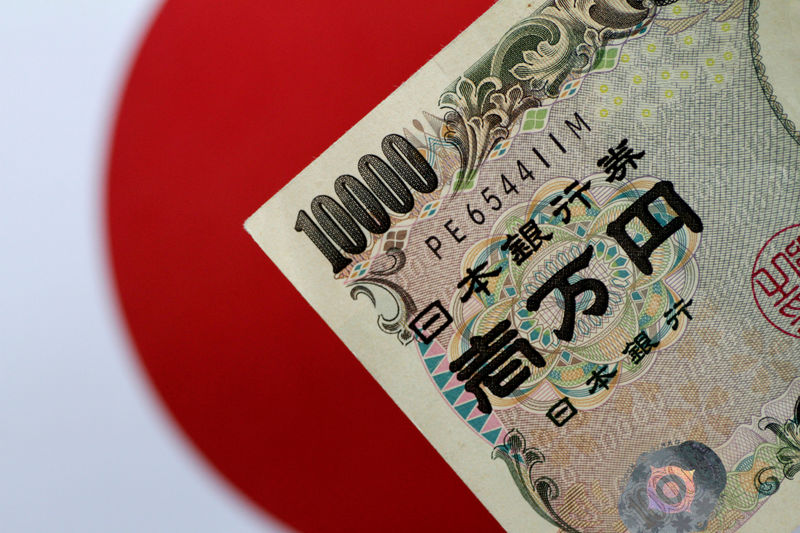By Mike Dolan
LONDON (Reuters) -If the Japanese government is thinking ahead, it may plan to rein in the errant yen rather than prop it up.
A two-year cat-and-mouse game between speculators and Japanese authorities – with increasing bets against the yen over gaping interest rate differentials with other G7 economies – ended this month with the cat licking its lips even as it suffered from some indigestion .
The yen’s slide to a near four-decade low, which played a role not least in the departure of another Japanese prime minister this week, led to months of government warnings and eventually periodic attacks from the Bank of Japan on buying the yen.
But when the BOJ finally raised rates again on July 31 and warned of more to come, it burst the carry-trade bubble and flipped the currency violently – triggering an eye-popping but short-lived wave of volatility on the stock markets in Tokyo and the surrounding area. the world.
Job done?
There is an opinion that thinks it might work a little too well.
Going back to long periods of recent history when the BOJ was buying or selling the yen every two to three years to correct its moves, there’s a good chance the currency will soon overshoot the strong side again.
None other than Nomura, Japan’s largest brokerage firm, raised this prospect before last week’s explosion.
“We may need to start considering possible currency interventions by the MOF (Ministry of Finance) to limit yen strength rather than weakness,” the macro research team told clients on August 2, adding that this is not yet was the “base case”. “
“Intervention history tells us that after the yen purchasing interventions, there followed interventions to sell the yen to limit the yen’s appreciation.”
Tendency to overshoot
And until about a decade ago, that was indeed the routine pendulum swing.
The most celebrated episodes of currency intervention were the collective forays of the G5 and G7 in 1985 and 1987 – with the former Plaza Accord weakening the dollar, followed two years later by the Louvre Accord to support the dollar. Dollar/yen was at the heart of these swings.
But yen-specific interventions by Japanese authorities pushed the official buying and selling of yen to extreme values between 150 and 75 per dollar alternately every few years for the two decades following the real estate crisis of the 1990s.
The extremes of low Japanese interest rates since that crash and the resulting inflation and deflation from speculative carry trades have set the stage for volatility and overshoots in both directions over that period.
The routine ‘ebb’ was the yen’s weakness and the ‘flow’ was an exaggerated pullback during times of stress or volatility, when carry trades were abandoned or Japanese investors fled to repatriated foreign investments. And that was a big reason why the yen behaved like a ‘sanctuary’ during market shocks during that period – something that further exacerbated the moves in the mix.
But the Great Financial Crisis of 2007-2008 was followed by a decade in which interest rates in virtually all Group of Seven members moved close to Japan’s zero level, smothering the temptations of carry-trading and ensuring a relatively stable yen exchange rate. could effectively sideline the BOJ’s hyperactive currency. desk.
In fact, there was no confirmed intervention between the extraordinary earthquake and tsunami shock of 2011 and 2022 – when the post-pandemic, post-Ukrainian invasion interest rate spikes elsewhere re-isolated Japan at the zero level – fueling the carry trade to the Eurozone. bargain.
The wild swings of recent weeks are merely a reminder of the currency’s inherent tendency to overshoot.
NORMALIZED RETURN GAPS?
Pivot ahead and it’s not hard to see where a burst of yen strength could come from here. With US and other G7 policy rates finally plunging and the carry trade disappearing, Japan may feel emboldened to continue ‘normalising’ – increasingly confident that the post-1990 decades of deflation are over.
Even though markets now think Tokyo may be even more reluctant to raise rates again for fear of roiling the stock market, as happened earlier this month, the latest GDP update may be encouraging, with another one expected soon Prime Minister is in town and the US Federal Reserve will probably start cutting interest rates next month.
Japanese two-year benchmark yields have fallen below 30 basis points, down from a 15-year high of around 50 basis points at the start of the month. For that reason alone, any suggestion of higher rates will warrant significant repricing.
But the interest rate gap with the rest of the G7 is already narrowing.
Two-year spreads against US Treasuries have fallen by 1.1 percentage points in just over three months, with the dollar/yen reacting to this move only with a three-month lag. It would take another 1.7 point of spread to get back to the 10-year average – and that could happen relatively quickly if yields are coming from both sides.
Fear of Donald Trump’s broad commitments on trade tariffs if the Republican former US president wins the November 5 election could be a reason for Japan to keep the heat on for a while. But Trump is no longer the favorite in polls or betting markets.
While another move to raise rates could be partly self-defeating if the yen’s strength hits exporters and the broader Japanese economy, the flip side of the currency’s strength is lower import prices, which allow for bigger real wage increases and so the holy grail of domestic consumption growth.
But if the yen’s strength goes too much, too fast, there is always an intervention to calm the rate.
The opinions expressed here are those of the author, a columnist for Reuters.
(by Mike Dolan X: @reutersMikeD; editing by Paul Simao)


